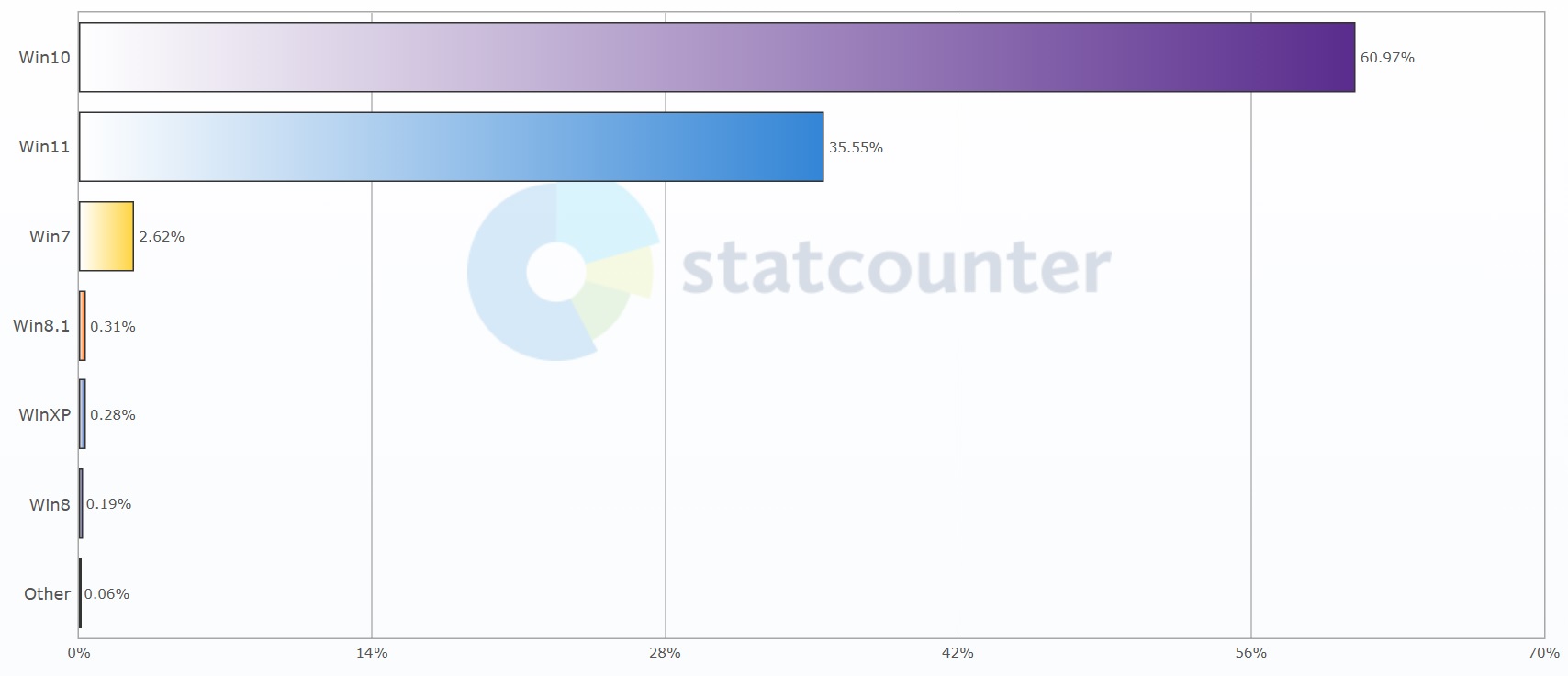With support for Windows 10 ending on October 14, 2025, Microsoft wants people to switch to Windows 11 or pay $30 to keep using Windows 10.
You can upgrade to Windows 11 by updating your existing PC or buying new hardware. But what if you’re going to keep using Windows 10 for another year after 2025? You’ll need to pay $30, or your PC will become vulnerable to security issues. That’s because Microsoft will stop releasing security updates for Windows 10 starting October 14, 2025.
I’m going to keep this article as simple as possible for consumers and businesses so you can understand how much and when you need to pay for Windows updates.
As you probably know, Windows 10 was launched on July 19, 2015, and Microsoft committed to 10 years of support, which means until October 14, 2025.
After this date, Microsoft will stop all updates for Windows 10 Home and Pro. This means no feature, monthly, optional, cumulative, security and other critical updates for devices still running Windows 10. As of today, October 31, 2024, there are roughly 349 days left for Windows 10 users to upgrade to Windows 11 or pay $30.
You can buy Windows 10 security updates
For enterprise customers, Microsoft always maintained an additional Extended Security Updates (ESU) program, which was previously limited to Windows 7. It’s now also coming to Windows 10 as the OS inches closer to the end of support.
The idea behind the ESU is to help businesses slowly move to Windows 11, but Microsoft understands that normal people (consumers) may also want to keep using Windows 10 for another year.
In an updated support document, Microsoft confirmed that, for the first time, it is offering the ESU program to consumers. This will be available for a $30 one-year subscription, with option to buy the “extended updates” closer to the 2025 end date. You can only buy it for one time only.
For enterprise and education customers, Windows 10 also has a ten-year support period, which ends on October 14, 2025.
For enterprise users, the ESU program spans up to three years, with prices doubling each year. In the first year, ESUs cost $61 per device, then increase to $122 per device in the second year, and finally $244 per device in the third year.
For education institutions, the cost is $1 per device in the first year, $2 per device in the second year, and $4 per device in the third year.
Here’s a full breakdown created by Windows Latest:
| Category | Consumers | Enterprise | Education |
|---|---|---|---|
| Windows 10 End of Support (EOS) | October 14, 2025 | October 14, 2025 | October 14, 2025 |
| Extended Security Updates (ESU) | Available for purchase; 1-year program for $30, starting closer to EOS date | Available via Volume Licensing; 3-year. $61 (Year 1), $122 (Year 2), $244 (Year 3) | Special education pricing: $1 per license (Year 1), $2 (Year 2), $4 (Year 3) |
| ESU Activation Options | No details, but it has to be super-simple. Maybe via MS website or MS Store? | 5-by-5 activation method, cloud-based (Microsoft Intune or Windows Autopatch), or included with Windows 365 | Cloud-based option for schools/uni. Microsoft Intune and Windows Autopatch support. |
| Support Provided Under ESU | Only security updates, no new features. | Only security updates. | Only security updates |
| Cloud-Based ESU Discounts | N/A | ~25% discount available through Intune or Autopatch for cloud-managed updates | Available, especially for institutions using Intune for cloud management |
Since it’s a one-year $30 plan for consumers, Microsoft may link the license to the Microsoft account and simplify the purchase and activation process.
Microsoft won’t tell us how you’ll be able to purchase the extended updates license, but Windows Latest understands it could be similar to how the company sold paid updates to Windows 7 businesses.
We expect Microsoft to make the paid updates program available directly through Microsoft’s site. You’ll continue to get updates through Windows Update once you’ve paid for the extended security service. However, remember that it’s a one-year program only, which means you’ll not be able to buy it again in October 2026.
Microsoft will likely release more details on this closer to 2025.
Windows 10 support dates and market share
It’s also worth noting that Windows 10 LTSC remains supported beyond these dates.
For those unaware, here’s a more comprehensive end-of-support table created by WindowsLatest:
| Version | Start Date | Mainstream End Date | Extended End Date |
|---|---|---|---|
| Windows 10 Home and Pro | Jul 29, 2015 | Oct 14, 2025 | N/A |
| Windows 10 2015 LTSB | Jul 29, 2015 | Oct 13, 2020 | Oct 14, 2025 |
| Windows 10 2016 LTSB | Aug 2, 2016 | Oct 12, 2021 | Oct 13, 2026 |
| Windows 10 Enterprise LTSC 2019 | Nov 13, 2018 | Jan 9, 2024 | Jan 9, 2029 |
| Windows 10 Enterprise LTSC 2021 | Nov 16, 2021 | Jan 12, 2027 | N/A |

As of October 2024, Windows 10 with 60.97% market share, followed by Windows 11 with 35.55%. Older versions have much smaller shares. Windows 7 has 2.62%, while Windows 8.1, Windows XP, and Windows 8 account for 0.31%, 0.28%, and 0.19%, respectively.
The post Microsoft: Pay $30 to keep using Windows 10 securely if you hate Windows 11 appeared first on Windows Latest
